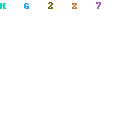Semetic Languages
All the Semetic languages are very similar. They may have a different script like the wedge shaped cuneiform of the original Assyrians. That script changed with the coming of Aramaic block script but still the same language. The Behistun Inscription of Darius I is an illustration of Aramaic written in cuneiform script about 500 BC. The cuneiform script was invented by the Sumerians (3500 BC?) whose language was different (a Hamitic language.) But the culture and science (Astronomy, the zodiac has not changed to this day, 360 degree circle and angles based on it, a base 60 and more) was adopted by the conquering Semites about 2000 to 1800 BC.
Another illustration of similar but not the same languages is Italian and Spanish. Same grammar, many similar words, but not the same language. But speakers of each can understand much of what the other speaker is saying. I had the experience with a French church of Christ evangelist in Lille, France, who was born in Italy. He didn't do English and I didn't do French but we communicated more or less in Spanish and hand signs. Hebrew and Aramaic is like that.
All the Semetic languages are related. Aramaic is similar to Hebrew and Arabic actually having the same Alef Bet for all three languages. Aramaic was the language of the whole of the Fertile Crescent (from the Persian Gulf round through Caananite Palestine) at least from the time of the Assyrian Empire beginning 800 BCE and probably before to Abrahamic time, on through New Testament times. The returnees from Babylonian captivity, 536 BCE, spoke Aramaic and it became the lingua franca of the Jews through the time of Ezra to the Advent of The Nazarene Carpenter. Since all people spoke Aramaic, Targums (Aramaic paraphrases of the scriptures) were written in the inter testament period so that attenders of the synogogue could understand what was taught. Targums are Aramaic paraphrases of Hebrew scripture and commentary. As you know Jesus spoke Aramaic. There is no Hebrew quotation from Jesus. Even Tabatha qumi is Aramaic. Eloi Eloi lama sabachtani is Aramaic. The Hebrew is Ely Ely lama azavtani. It means the same thing.
Original Hebrew script differs from the Block style Hebrew we are used to. In fact the block Hebrew characters are actually Aramaic and were adopted after the Babylonian captivity. To see an inscription in the Hebrew that was extant in Hezekiahs time click http://www.moellerhaus/22.htm and scroll down till you find the inscription that was written inside Hezekiah's Siloam Gihon Tunnel.
The Inscription, now in the Museum of the Ancient Orient in Istanbul, was found in 1880 by two boys wading inside Siloam tunnel some 20 feet above the western reservoir .
The ancient Hebrew script is nothing like the Aramaic block letters we now use. A part of the Bible is written in Aramaic, that is, a portion of Daniel is written in Aramaic and -- a large portion of Ezra is written in Aramaic and even the Hebrew portion has many Aramaic words.
100 years before Christ The Essenes are said to have composed the DSS Isaiah Scroll. The language of the scroll is Hebrew with a heavy Aramaic accent and some (a few only) Aramaic words. The script is manuscript Hebrew and does not look like the current characters. My Isaiah Scroll introduction pages are actually a grammar of the scroll. You might want to have a look. http://www.moellerhaus/qum-intr.htm
Of the Semetic languages the grammar is almost identical, the Alep Bet the same and much (but not all) vocabulary is shared. All pronominal suffixes are the same except Aramaic adds an open sylable. Like kem in Heb. is 2plural you (ye) and the same in Aramaic is kemah.
The Arabic is still the same: Salaam aley Kem is "peace upon you (ye) Hebrew is: Shalom
aley-kem
Thursday, February 21, 2008
0
Semetic languages and Hebrew
Posted by
Fred Miller
at
5:21 PM
Subscribe to:
Posts (Atom)
About Me

- Fred Miller
- Carrollton, Georgia, United States
- Evangelist and professor of Bible, History, Greek, and Hebrew. Currently living with wife, Charlotte, in Carrollton, Georgia, just outside Atlanta. Please visit my bio at moellerhaus.com for more information.
